This website is supported by its readers. If you click one of my links I may earn a commission. I am also a participant in the Amazon affiliates program and I will also earn a commission from qualified purchases.
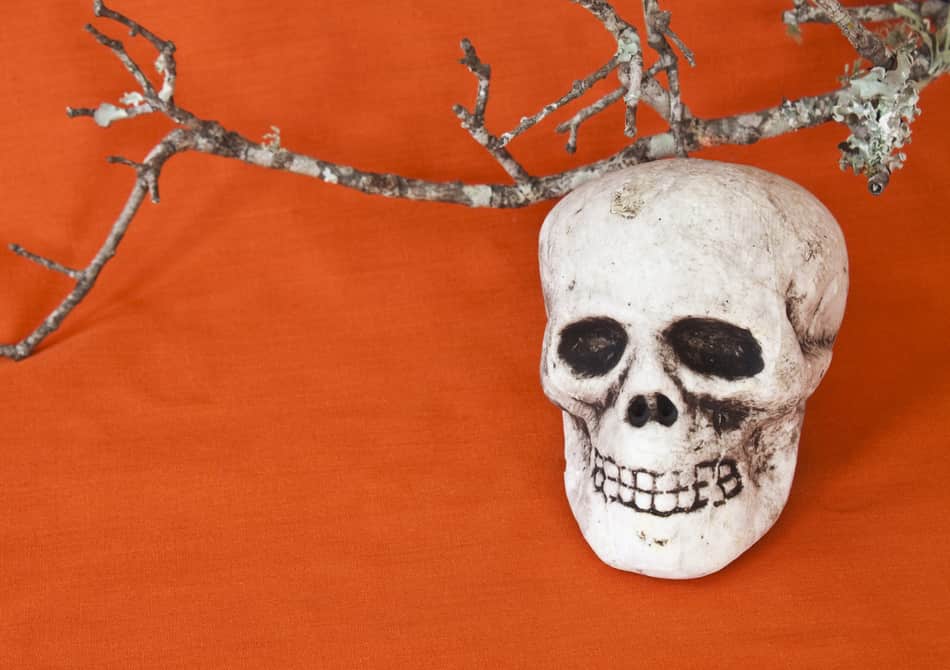
So recently I’ve been noticing that one of the Chinese elm bonsai in my collection has started to develop shriveled up, weak branches. It’s no surprise to say that these bonsai branches are dying, and so this got me thinking, should you cut off dead bonsai branches? And what causes dead bonsai branches?
Dead bonsai branches should be removed and pruned with a sharp pair of pruning clippers a few centimeters below from where the branch is starting to weaken. Dead bonsai branches are mainly caused by poor nutrition, watering or infection, and disease.
So when should dead branches be a cause for concern, and what are the telltale signs of dead bonsai branches? Keep reading to find out more!
Just a quick heads up, over the past three years of running Plantpaladin, hundreds of people have asked for product recommendations. As such, You can find my favorite indoor bonsai tree here (link takes you to Bonsaiboy), my favorite outdoor bonsai tree (link takes you to Bonsaiboy), or have a look at all the products I recommend here.
Should you cut bonsai dead branches
While all of us bonsai owners would love to have a long living bonsai that gets to well over 100 years old. Lack of care and time often means that a lot of us will, unfortunately, damage and even kill our bonsai.
One of the most common signs that you need to look out for to monitor the overall health of your bonsai tree is dead branches.
These typically form in the weaker branches of your tree due to lack of watering or poor nutrient or soil composition and if left unpruned can potentially impact other branches, leaves, and the trunk of your tree.
Dead branches then should always be removed from your tree to avoid any disease infecting the rest of your tree – potentially killing your plant.
How to remove dead branches from your bonsai?
To remove the dead branches from your bonsai then:
- Observe your bonsai for signs of brittle weak branches – this is a surefire sign they are dead.
- Dead branches are usually accompanied by dry leaves that have been discolored.
- Using sterile gardening sheers make one swift cut on your bonsai branch
- The cut must be made on the healthy part of the branch to avoid the further spread of diseased branches
- The cut should also be made below any tertiary branches in the desired area of the tree.
- If one branch has multiple dead branches stemming from it, ensure you cut them from the primary branch.
- Repeat the process until all the dead branches of your bonsai have been removed.
- Once completed never use the sheers/cutters on the healthy parts of the tree – this can spread any disease your bonsai is facing.
- Then ensure that you check your soil for nutrients and ensure you water your bonsai with distilled water to remove any impurities and salts from the tree
- Investing in soil that also can pass water easily but also hold onto moisture such as cactus soil to ensure your plant s getting the right nutrient flow won’t be affected by things such as root rot.
Also if your plant is still struggling to absorb nutrients even after changing up the soil, consider repotting or better yet planting your bonsai in the ground.
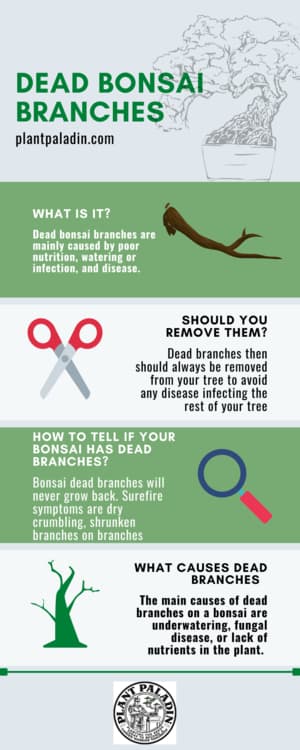
How to tell if your bonsai has dead branches?
So how exactly do you know if your branches are dead and not just weekend- after all a lot of the symptoms such as dry branches will be quite common.
Bonsai dead branches will never grow back. Surefire symptoms are dry crumbling, shrunken branches on branches that used to be bouncy and virile. To test, peel back the top layer of bark, If it crumbles or the underlayer is not a healthy green then the branch is dead.
When should you trim dead branches from your bonsai?
Dead branches from your bonsai should be removed as soon as they are noticed. This is because if the dead branches are caused by disease like a fungal infection, it can spread through the branch system to other parts of the tree.
What causes dead branches on a bonsai?
The main causes of dead branches on a bonsai are underwatering, fungal disease, or lack of nutrients in the plant. Whilst the dead branches will not grow back, there are preventative measures you can take to ensure the rest of your tree does not die.
Now each of these needs to be addressed in their own ways so I’ve helped break these down further below:
Underwatering
Underwatering is one of the most common problems we bonsai owners face.
It’s especially common is smaller-sized bonsai which can dry out or if you keep your bonsai outdoors in the summer months.
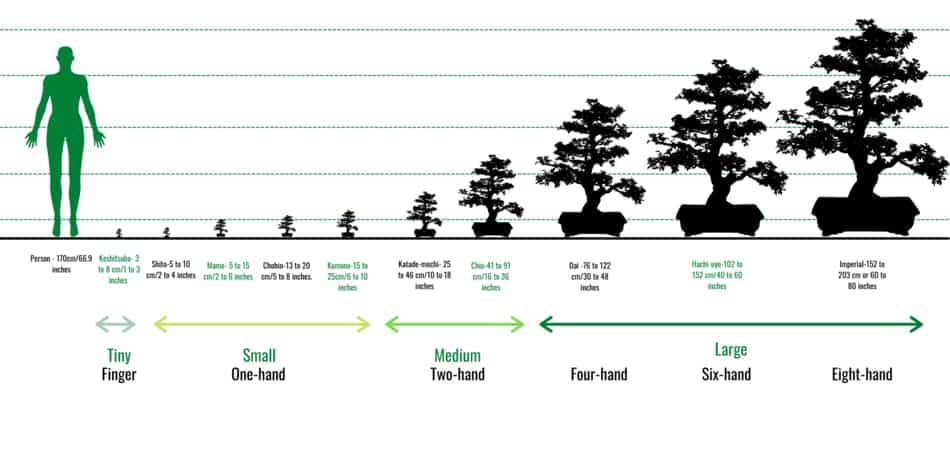
How to counteract
The best way to counteract this to prevent dead or dying branches in the future is to touch the topsoil of your bonsai.
If it is dry then ensure you water your plant until the water drains from its drainage holes.
You can then check the top solid again in a few hours to see if it needs rewatering.
It’s also worth watering your bonsai with distilled water that can help remove excess salt and toxins from your bonsai.
Fungal disease
Fungal disease is also an incredibly common reason for bonsai branches to start.
This usually starts when your bonsai develop white spots of powder on its leaves followed by dead crumbly branches.
How to counteract
To prevent in the future use a good fungicide and spray your plant to remove the fungus from taking over or killing your tree.
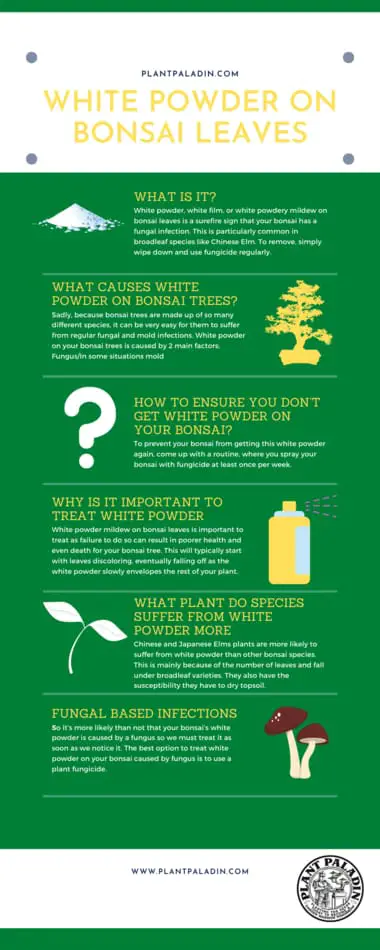
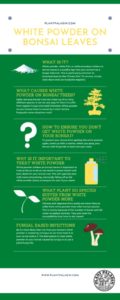
Lack of nutrients
Another reason that is much more difficult to spot is the lack of nutrients.
This is usually a soil issue – either your soil does not have enough nutrients or there is not enough room for the nutrients to flow.
How to counteract
The best way to be sure is to do a soil test to see how many nutrients your soil has in it.
If it does come back that your soil doesn’t have enough nutrients – repot your bonsai and invest in a new type of soil.
I like using an organic cactus soil hybrid that has lots of space for aeration, moisture, and root growth.
Then use fertilizer to ensure it’s got enough fertilizer going forward.
If this still does not work, consider planting your bonsai in the ground outdoors to have access to the natural nutrients in the ground.
How often should you check your bonsai for dead branches?
Checking your bonsai once per week for signs of discolored leaves and dead branches is the best way to keep on top of dead bonsai branches. If your branch looks dry peel back the top layer of bark. If the color is a healthy green then your branch is alive and well.
Do dead branches ever come back to life?
Dead bonsai branches will never come back to life. This is because your bonsai will have stopped the nutrient flow to these areas of your tree, prioritizing the branches and leaves that are alive and well. Dead branches then should be removed immediately to not contaminate the rest of your plant.
How long can bonsai live if branches don’t die?
Bonsai trees, regardless of plant breed or type, if maintained and nurtured will live on average for 100 years. Some avid bonsai hobbyists have managed to grow trees that live for more than 200 years, with some of the oldest trees reaching over 1000 years old.
To read up more on this check out my post on bonsai tree lifecycles here.
What do the professionals say?
So I wanted to ensure that I asked a few other bonsai experts in the space what their thoughts on dead branches were so on a few trips to a few recent bonsai centers I asked the question – this is what their response where:
| Organization | Should you trim dead bonsai branches |
| Botanical Gardens | Yes |
| Bonsai 2 u | Yes |
| Herons Bonsai | Yes |
When should you avoid trimming dead bonsai branches?
Dead bonsai branches should always be removed with no exceptions. This is because dead branches can carry disease which will pass on to the rest of the tree, killing your bonsai overall.
Should you remove healthy bonsai branches?
Healthy bonsai branches can be removed from your tree and are often done in the design process for bonsai. Removing the branches and leaves can also be done during the process of defoliation, where all the leaves and branches of a bonsai are removed to create new growth.
To read up more on defoliation – check out my post on it here.
Should you cut the main branches or just the dead branches?
So if your tree has multiple secondary branches that are dead but the main branch of your bonsai that these secondary branches sprout from is fine then I would advise removing the large branch.
The large branch may be infected causing all of the secondary branches to die and so removing the root of the problems might be the best way to deal with this.
Are dead branches the same as deadwood?
So whilst dead branches are a problem for bonsai, deadwood is something a little different.
Deadwood is a technique used for things like Jin or sabamiki as a way to make your bonsai have an aged look – produces artificially – usually through flying or painting the wood with something like lime sulfur.
Dead branches on the other hand are just branches that have died naturally for your bonsai.
My top picks for the gear you will need!
So like I mentioned earlier, over the past three years of running PlantPaladin, hundreds of people have asked me for my recommendations on the best bonsai gear on the market.
Having spent thousands of dollars on bonsai items these past few years and tested at least 100 bonsai-specific products, I’ve listed my favorite products below – All of which I highly recommend and think you can get great value.
They can purchase directly by clicking the link to take them to Amazon.
Bonsai Tool Set: One of the significant challenges I’ve had is finding a toolset that was not only durable but didn’t break the bank. SOLIGT has recently developed a fantastic bonsai tool set that covers all the tools you need to trim, prune, and repot your trees. – You can grab it here.
Complete Bonsai Set: Many of you will want to grow your bonsai trees entirely from scratch, but finding the varicose seeds, pots, and other items in one place can be challenging. Leaves and Sole then have created a complete bonsai set that I’ve personally used that ticks all the boxes. You can grab it here.
Bonsai wire: The number of times I’ve run out of wire for my bonsai or purchased cheap bonsai wire that doesn’t do the job is embarrassing for me to admit. After a lot of trial and error, I found that using Hotop’s aluminum bonsai wire is one of the best options on the market. This can easily be used for both indoor and outdoor bonsai. You can grab it here.
This post was written by Fehed Nicass who has been passionate about bonsai for over 2 years. He currently resides in the UK and works in sales.
